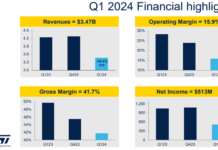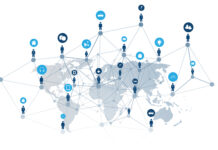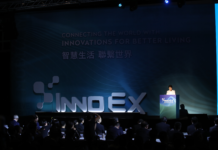In the vast expanse of the maritime sector, efficiency and safety remain at the forefront. The intricate dance of vessels crisscrossing the world’s oceans necessitates advanced monitoring and management techniques.
Historically, vessel tracking methods were rudimentary, relying heavily on manual inputs and prone to errors. However, as with many industries, technology has ushered in a new era.
Today, vessel tracking has become a confluence of cutting-edge technologies that ensure accuracy, speed, and enhanced functionality.
It’s not merely about keeping tabs on a ship’s location anymore; it’s about optimizing routes, predicting potential threats, and promoting sustainable maritime practices.
Continue reading to delve deeper into the advancements shaping the future of vessel tracking.
Innovative Tracking Methods
The maritime industry’s push for more efficient and accurate vessel tracking has led to significant innovations in tracking methodologies. These methods ensure real-time data, enhanced precision, and broader coverage.
Here are some notable advancements in this domain:
- Satellite enhancements: Enhanced satellite technologies offer improved and timely vessel location information. With higher-resolution images and broader satellite coverage, tracking is now more reliable than ever.
- Automatic Identification Systems (AIS): AIS systems have been upgraded to communicate vessel positions with increased frequency. This aids in avoiding collisions and ensures smoother navigation.
- Long-Range Identification and Tracking (LRIT): LRIT systems enable administrations to track their ships globally, which is essential for security and regulatory compliance.
- Radio Frequency Identification (RFID): RFID technology aids in monitoring vessel movements in confined areas, like ports or restricted waterways, by transmitting signals between RFID tags and readers.
- Data fusion technologies: By combining multiple sources of information, these technologies ensure redundancy and validation of vessel tracking data, resulting in more reliable tracking.
Incorporating these innovative tracking methods showcases the maritime industry’s commitment to safety and operational efficiency. With these technologies, shipping companies can ensure they’re always on course and ahead of potential challenges.
Intelligent Analysis
Harnessing the power of artificial intelligence and computational capability has transformed how the maritime industry interprets vast amounts of vessel data. Through intelligent analysis, complex patterns become discernible insights, paving the way for proactive decision-making.
Here are the standout features brought about by such advanced analysis in vessel tracking:
- Predictive analytics: Machine learning, a subset of artificial intelligence, enables predictive analytics to anticipate vessel routes and potential diversions. This capability is invaluable for foreseeing and avoiding potential navigational hazards.
- Threat forecasting: Algorithms analyze patterns and historical data to identify imminent threats, such as unfavorable weather or piracy zones, enabling timely preventive actions.
- Collision avoidance algorithms: Advanced systems evaluate vessel trajectories in real time. These algorithms propose route modifications or speed changes to avert potential collisions.
- Operational efficiency: Machine learning models analyze data related to operations to propose methods for improving fuel efficiency, optimizing routes, and reducing costs.
- Maintenance predictions: Continuous equipment data analysis enables these systems to predict when maintenance is needed, significantly reducing the chances of unexpected breakdowns.
Implementing intelligent analysis in vessel tracking offers the maritime industry a robust tool for proactive decision-making. With this technology, vessel operators can ensure safer, more efficient, and cost-effective journeys.
Integration Of The Internet Of Things
The Internet of Things (IoT) has emerged as a revolutionary force in various industries, and the maritime sector is no exception. By integrating IoT, vessels can connect multiple components, ensuring seamless communication and real-time monitoring.
The following highlights the transformative impact of IoT integration in vessel tracking:
- Continuous equipment monitoring: IoT sensors continuously monitor equipment’s health and performance. This real-time feedback helps in detecting malfunctions early, minimizing downtime.
- Enhanced security features: Connected security systems can immediately detect any unauthorized access or breaches, adding an extra layer of security.
- Energy consumption analysis: IoT devices monitor and analyze energy consumption patterns, aiding in identifying areas of inefficiency and optimizing energy use.
- Remote access and control: Operators can remotely monitor and control specific onboard systems, enhancing the ability to intervene when necessary, even from distant locations.
- Environmental monitoring: IoT sensors can measure environmental factors such as air quality, temperature, and humidity, ensuring optimal conditions for sensitive cargo and providing valuable data for voyage planning.
Using IoT for vessel tracking puts shipping companies at the forefront of technology. It promises improved operational efficiency, safety, and cost-effectiveness.
Global Connectivity And Cloud Systems
As the world becomes increasingly interconnected, vessel tracking reaps the benefits of enhanced global connectivity and cloud-based solutions. These modern systems allow maritime operations to seamlessly access, store, and share vital information.
Below are some significant ways these technologies impact vessel tracking:
- Real-time data access: Cloud systems enable real-time access to vessel data from anywhere worldwide. This feature ensures that all involved parties, from operators to regulatory authorities, have the latest information at their fingertips.
- Data redundancy and backup: Cloud storage provides a layer of data protection. Information is stored across multiple servers, ensuring that even in the event of a system failure, data remains accessible and intact.
- Cost efficiency: Cloud solutions often eliminate the need for heavy on-premise infrastructure, leading to significant cost savings in setup and maintenance.
- Software updates and scalability: Cloud systems receive frequent updates to include the latest features and security measures. Users can also quickly scale them to accommodate growing data requirements.
- Integration with other systems: Cloud platforms can seamlessly integrate with other digital tools and systems, creating a holistic environment for data gathering, analysis, and decision-making.
Embracing global connectivity and cloud systems in vessel tracking offers unparalleled access to information and collaborative capabilities. It marks a significant step towards optimizing maritime operations for the digital age.
Advanced Sonar And Radar Systems
Vessel tracking has dramatically benefited from developments in sonar and radar technologies. These advanced systems are pivotal in enhancing navigational accuracy and ensuring maritime safety.
Here’s a closer look at their influential contributions to vessel tracking:
- High-resolution imaging: Modern sonar and radar systems produce clearer and more detailed images. This clarity aids vessels in identifying obstacles and underwater terrain features with precision.
- Extended range: With increased coverage range, these technologies allow vessels to detect potential hazards or nearby ships from greater distances, giving them more time to take preventive actions.
- Adaptive signal processing: By adjusting signal frequencies based on environmental factors, these systems can optimize their performance in different sea conditions, ensuring consistent tracking accuracy.
- Multi-frequency capabilities: Utilizing multiple frequencies allows for a broader detection range, ensuring thorough surveillance across various depths and conditions.
- Integration with navigation systems: Modern sonar and radar systems seamlessly integrate with onboard navigation tools, providing real-time feedback and enhanced route planning capabilities.
The evolution of sonar and radar systems has undoubtedly elevated the standards of vessel tracking. By leveraging these technologies, maritime professionals can confidently navigate even the most challenging sea routes, ensuring safety and efficiency.
Conclusion
In today’s maritime world, technology serves as both a guide and a link, steering vessels through obstacles and connecting them to improved efficiencies. As vessel tracking technologies advance, the industry approaches a new era of safety, precision, and connectivity. For maritime stakeholders and enthusiasts, it’s the opportunity to embrace these innovations and navigate toward a brighter, safer, and more interconnected future.


















